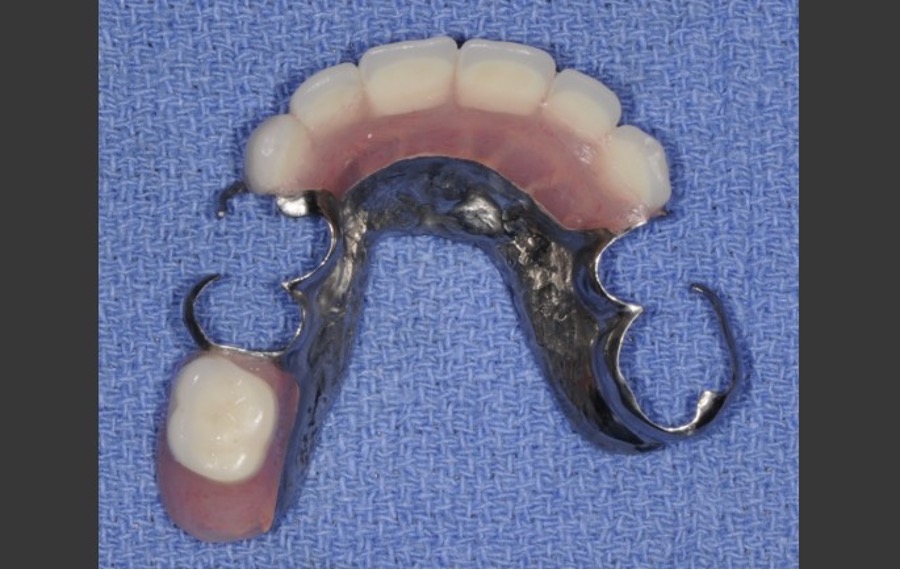Dentures are custom-made removable artificial teeth used to replace a person’s missing teeth and restore their appearance and oral functions.
In this issue, we will discuss what you need to know about dentures.
Partial dentures replace one or more teeth. Full dentures replace all teeth in an arch or both arches.
Full Dentures are made of an acrylic base. It is colored in order to resemble gum tissue and to support a full set of plastic or porcelain teeth. The traditional full denture is held in the mouth by forming a seal with the gums. Also, they can be held in place by attaching dental implants that are surgically placed in the bone of the jaws. This treatment requires more of a financial investment than the traditional complete denture. The implants allow the patient to bite with a solid biting force like natural teeth. Some full dentures occasionally require dental adhesive to help create the glue to keep the denture in place.
Partial Dentures can either be made with a plastic base or a metal base that supports the number of teeth that need to be replaced. It is held in the mouth by using clasps that are carefully adapted around the remaining teeth. Plastic partial dentures have normally been used as emergency or temporary replacements of missing teeth, allowing the gums and bone to heal before a permanent solution is completed.
Immediate Partial Dentures are used when the tooth loss is in the smile zone or in its proximity. This avoids any embarrassment because patients leave the office with replacement teeth.
Dentures are made by a special process. The dentist takes a series of impressions or molds of the oral tissues that will support the denture. Today, due to advances in technology we are able to take these impressions digitally. The digital image is then placed on a computer screen and the details sent to a dental lab. The dental lab will use either the digital or physical impressions to make models of the patient’s mouth.
Two common alternatives to full or partial dentures are dentures attached by dental implants or bridges.
Bridges replace missing teeth by placing crowns over the teeth next to the space on both sides of the space. Bridges are made from gold, porcelain fused to gold, all porcelain or special ceramics. Bridges can only replace about two to three missing teeth in a row, depending on the location. Since bridges are cemented in place, they are considered a “fixed or permanent denture.”
Dental Implants are highly specialized titanium posts that are inserted into the bone of the upper or lower jaw. This insert is then used to replace a single tooth by attaching a crown to it, or multiple teeth by attaching a bridge to multiple implants. Implants normally require a greater financial investment and are usually the best option for tooth replacement. Implants are the most secured and long-lasting replacement for missing teeth.
If cared for properly, dentures should last 2-5 years.
Over time though, the bone shrinks and causes the denture to become loose. The rate of shrinkage varies with the individual.
Today, dentures are still common place in dentistry. Dentures are often given to patients because of their convenience and cost effectiveness; especially when compared to implant supported dentures. Certain dental specialists offer implants as an alternative due their vast experience in implant dentistry. If dental implants are placed, then there is every reason to expect your denture to last well over 20 years or for the rest of your life. Speak to a local dentist today about options for teeth replacement. If you desire a solid bite and an increased taste experience then maybe an implant supported denture is for you.
Dr. Kendal V. O. Major is Founder and CEO of Center for Specialized Dentistry which is a comprehensive family dental practice operating in Nassau and Freeport. He is the first Bahamian Specialist in gum diseases and dental implants since 1989. He also is a certified Fast braces provider. His practice is located at 89 Collins Avenue, Nassau at (242)325-5165 or [email protected].

A Full Maxillary and Mandibular Denture

A Partial Denture





